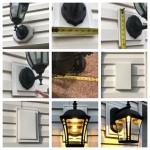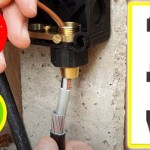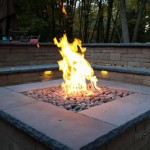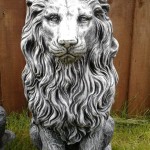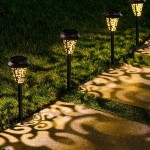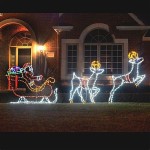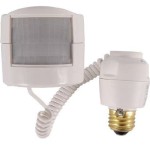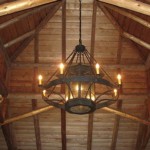Outdoor Grill Won't Light
A non-starting outdoor grill can be a frustrating obstacle to a planned cookout. Several factors can contribute to this issue, ranging from simple problems with readily available solutions to more complex issues that may require professional assistance. This article outlines common causes and troubleshooting steps to help restore a grill to working order.
Gas Grills: The majority of gas grill lighting problems stem from issues with the gas supply, ignition system, or burners. Systematic troubleshooting can help pinpoint the source.
Gas Supply: The first step is to ensure an adequate gas supply. Check the propane tank level if using a propane grill. A low or empty tank is the most frequent culprit. If using a natural gas grill, confirm the gas supply valve to the grill is fully open.
Obstructions: Spider webs and insect nests can obstruct gas flow, particularly within the burner tubes and gas lines. Visually inspect these areas and use a thin wire or pipe cleaner to clear any blockages. Ensure the grill lid is open during this process.
Ignition System: Gas grills typically utilize either an electronic igniter (push-button or battery-operated) or a piezo igniter (a spring-loaded mechanism that creates a spark). If using an electronic igniter, verify the batteries are functioning correctly. Replace them if necessary. Observe the igniter for a spark when the ignition button is pressed. If no spark is present, the igniter module may be faulty and require replacement.
Piezo Igniters: Inspect the electrode wire and connection to the igniter. Ensure they are securely attached and free of corrosion. Test the igniter by attempting to create a spark. If the spark is weak or nonexistent, the igniter may need replacement.
Burners: Clogged burner ports restrict gas flow and prevent proper ignition. Clean the burner ports with a wire brush, small drill bit, or specialized burner cleaning tool. Ensure the burner tubes are correctly positioned and aligned with the gas valves.
Gas Leaks: While less common, gas leaks can prevent a grill from lighting and pose a serious safety hazard. Check for the smell of gas around the tank, hose connections, and regulator. Apply a soapy water solution to these areas and look for bubbles, which indicate a leak. If a leak is detected, immediately turn off the gas supply and do not attempt to light the grill. Contact a qualified professional for repair or replacement.
Charcoal Grills: Charcoal grills rely on proper airflow and sufficient heat to ignite the charcoal. Several factors can impede this process.
Damp Charcoal: Charcoal absorbs moisture from the environment. Damp charcoal is difficult to light and produces excessive smoke. Use dry charcoal or allow damp charcoal to dry thoroughly before use.
Insufficient Airflow: Charcoal requires adequate airflow to ignite and maintain combustion. Ensure the vents on the bottom and lid of the grill are open. Ash buildup can restrict airflow. Clean out the ash catcher and remove any excess ash from the charcoal grate.
Improper Charcoal Arrangement: Proper charcoal arrangement is crucial for even heating and efficient burning. Avoid spreading the charcoal too thinly. A pyramid or mound shape generally works well for lump charcoal, while briquettes can be arranged in a more even layer.
Starter Fluid Usage: Starter fluid can assist in igniting charcoal, but excessive use can impart an unpleasant flavor to food. Use starter fluid sparingly and allow it to soak into the charcoal for a few minutes before lighting. Never add starter fluid to already lit coals.
Electric Grills: Electric grills offer the convenience of simple operation, but they can also encounter issues.
Power Supply: The most common reason for an electric grill failing to heat is a problem with the power supply. Check that the grill is properly plugged into a functioning outlet. Test the outlet with another appliance to ensure it is receiving power. Check the grill's power cord for damage or fraying.
Heating Element: The heating element is the component responsible for generating heat in an electric grill. Over time, it can wear out or malfunction. If the grill is receiving power but not heating, the heating element likely needs replacement. Consult the grill's owner's manual or contact the manufacturer for instructions on replacing the heating element.
Temperature Control: The temperature control dial or knob can sometimes malfunction, preventing the grill from reaching the desired temperature. Check the connection between the control knob and the heating element. If the connection is loose or damaged, it may need repair or replacement.
Safety Precautions: When troubleshooting any grill, prioritize safety. Always allow the grill to cool completely before handling any components. Wear appropriate protective gear, such as gloves and eye protection, when cleaning or repairing the grill. If unsure about any aspect of grill maintenance or repair, consult a qualified professional.

What To Do When A Gas Grill Won T Light With Full Tank

Gas Grill Won T Light Grillio

What To Do If My Viking Grill Won T Light Up Appliance Pros

Weber Gas Grill Won T Light Solutions

Gas Grill Won T Ignite Or Light

How To Light A Gas Grill That Won T Ignite

Why Your Gas Grill Won T Light And What To Do About It

What To Do If Your Grill Won T Light The Bbq Depot

The Disgusting Reason Your Grill Won T Light

Gas Grill Won T Light Grillio
Related Posts
